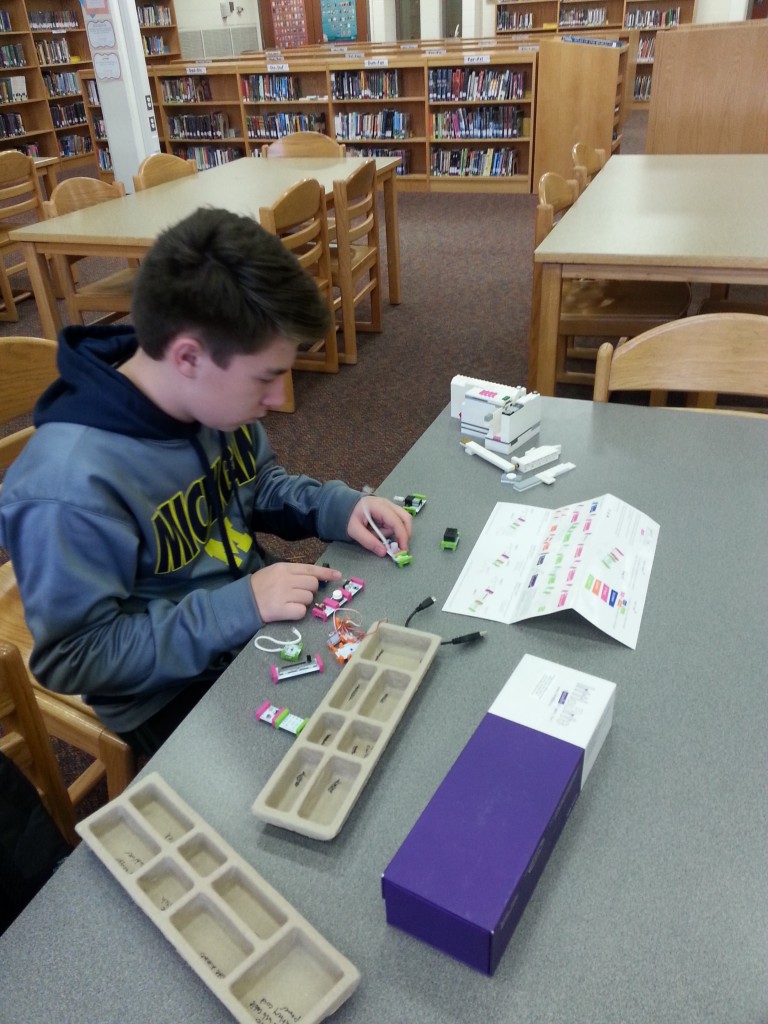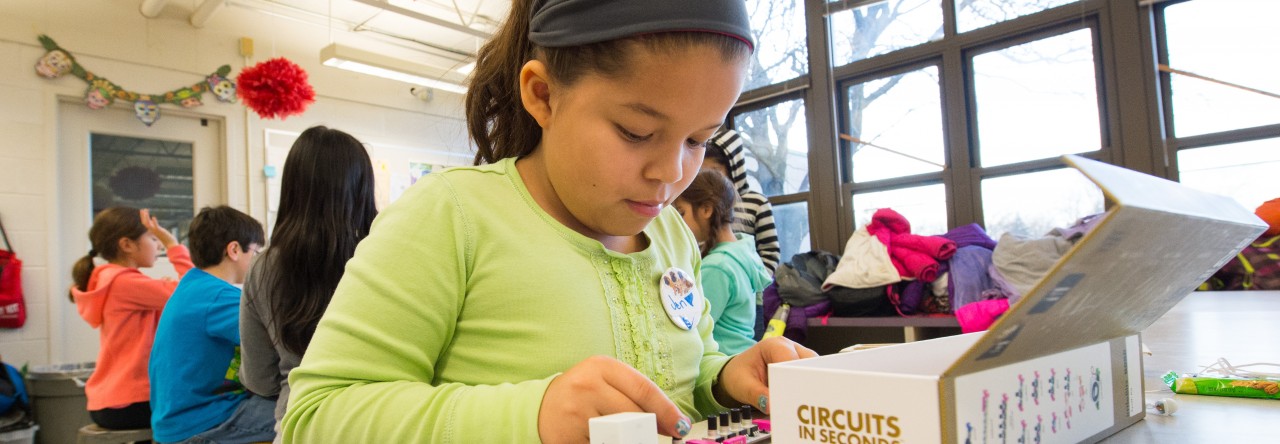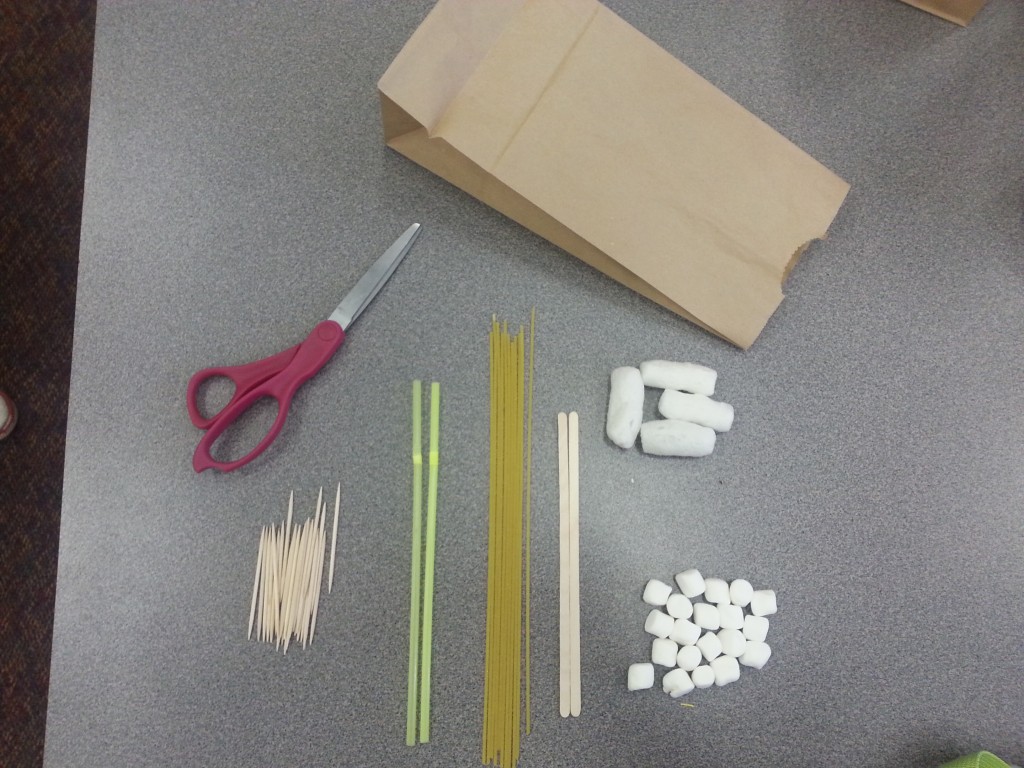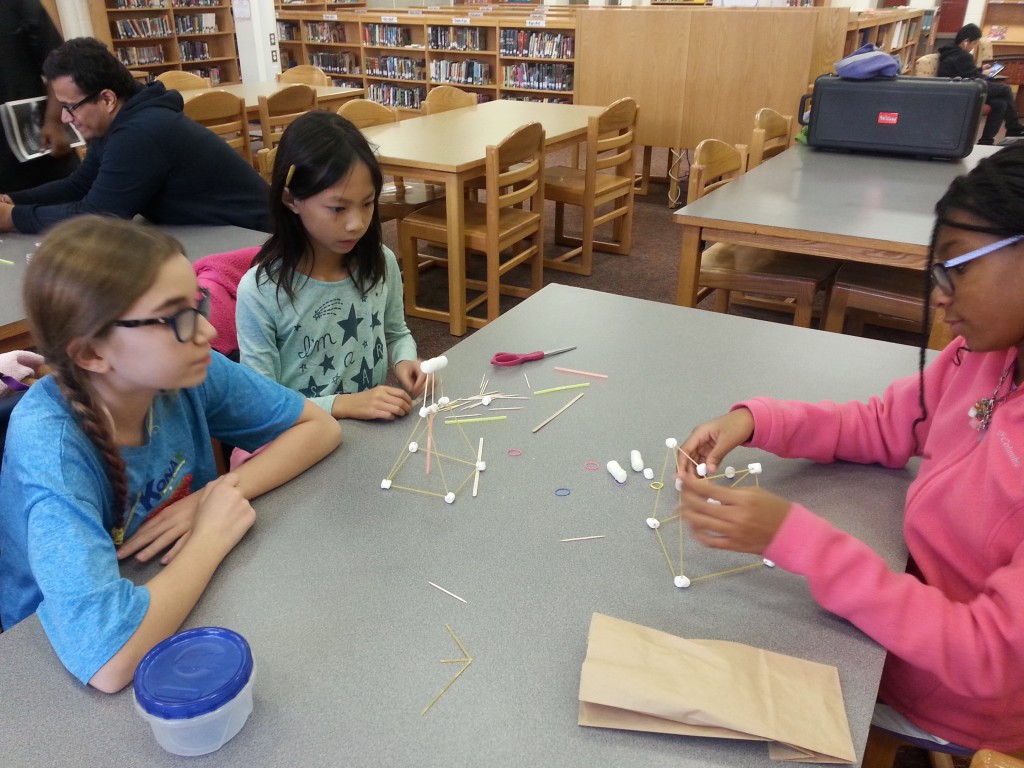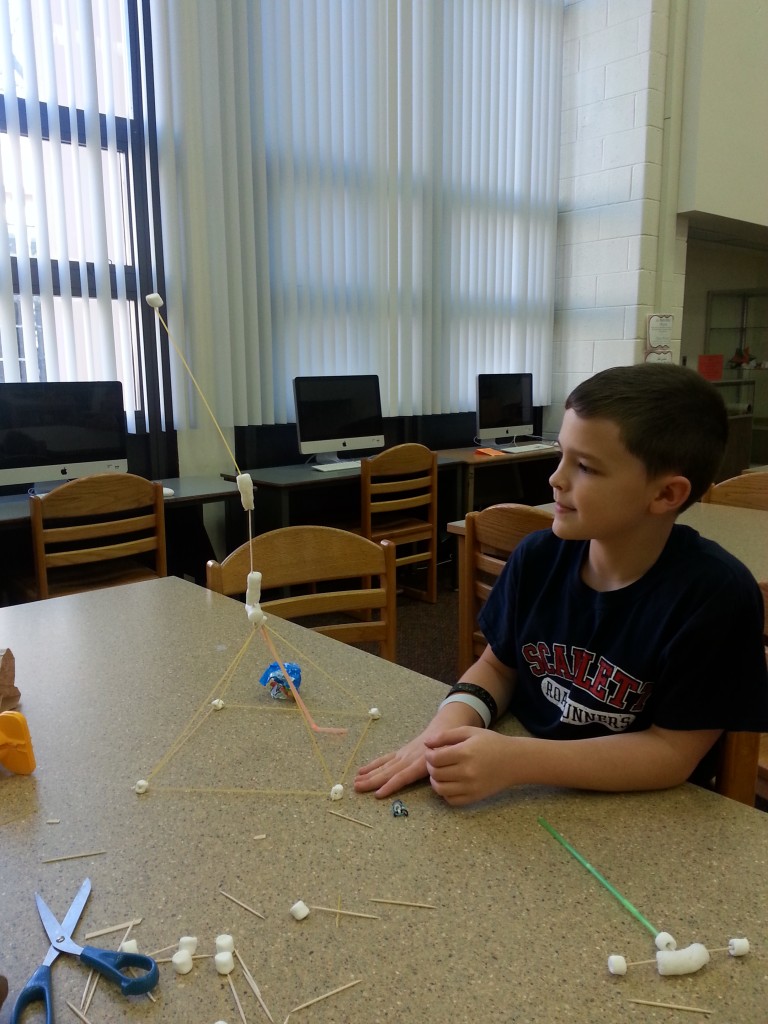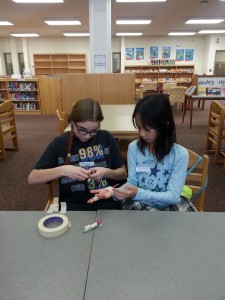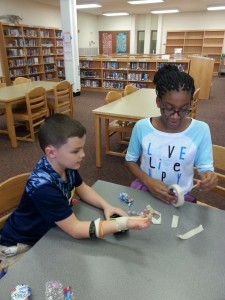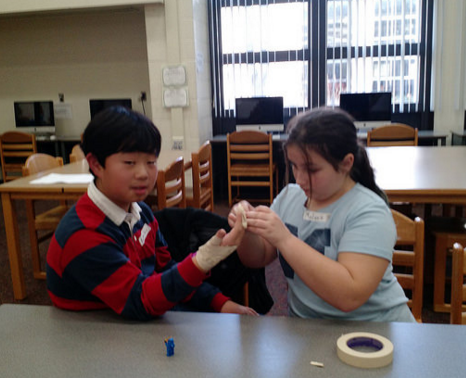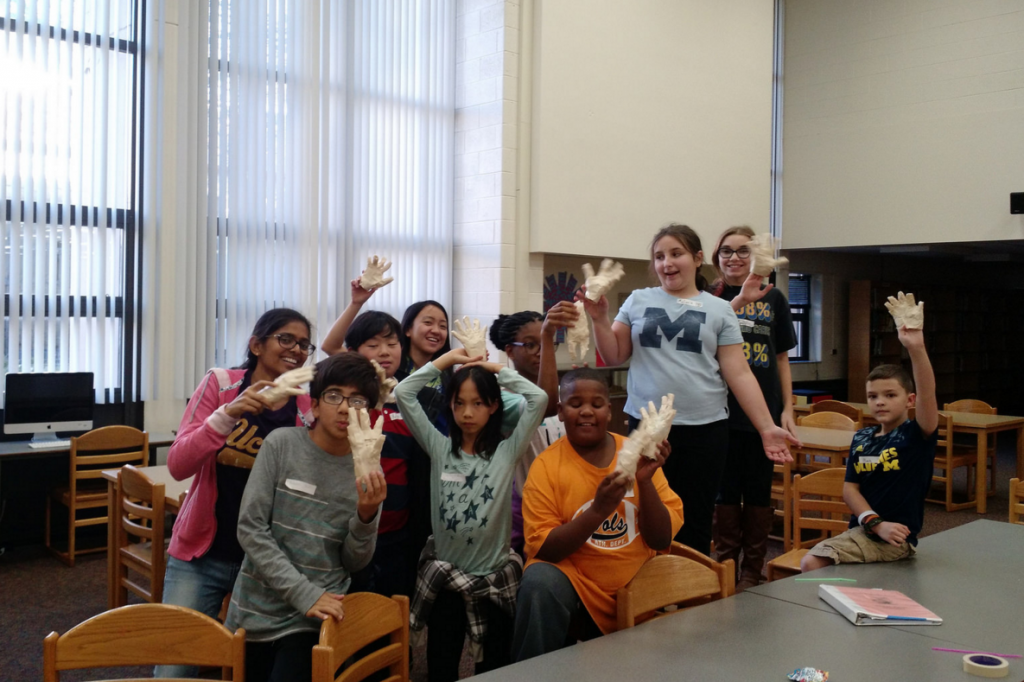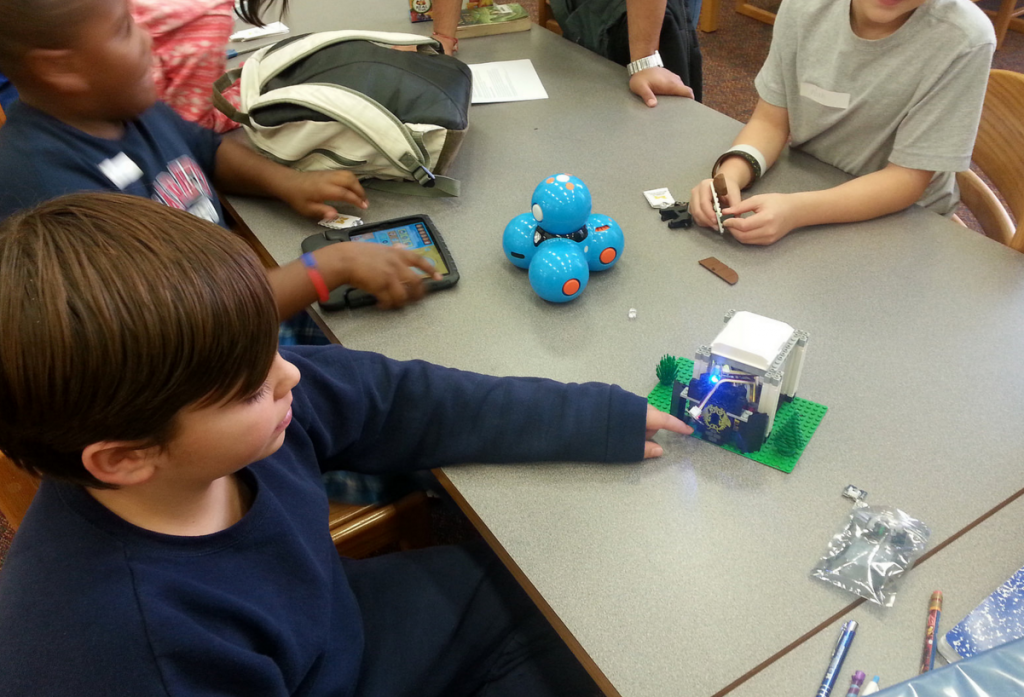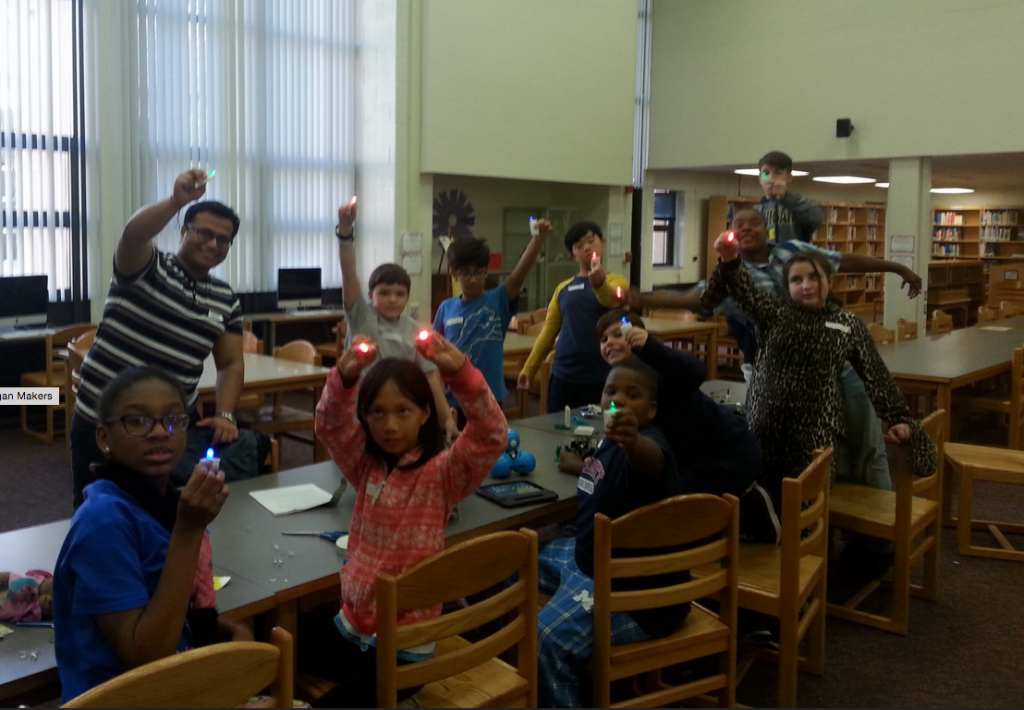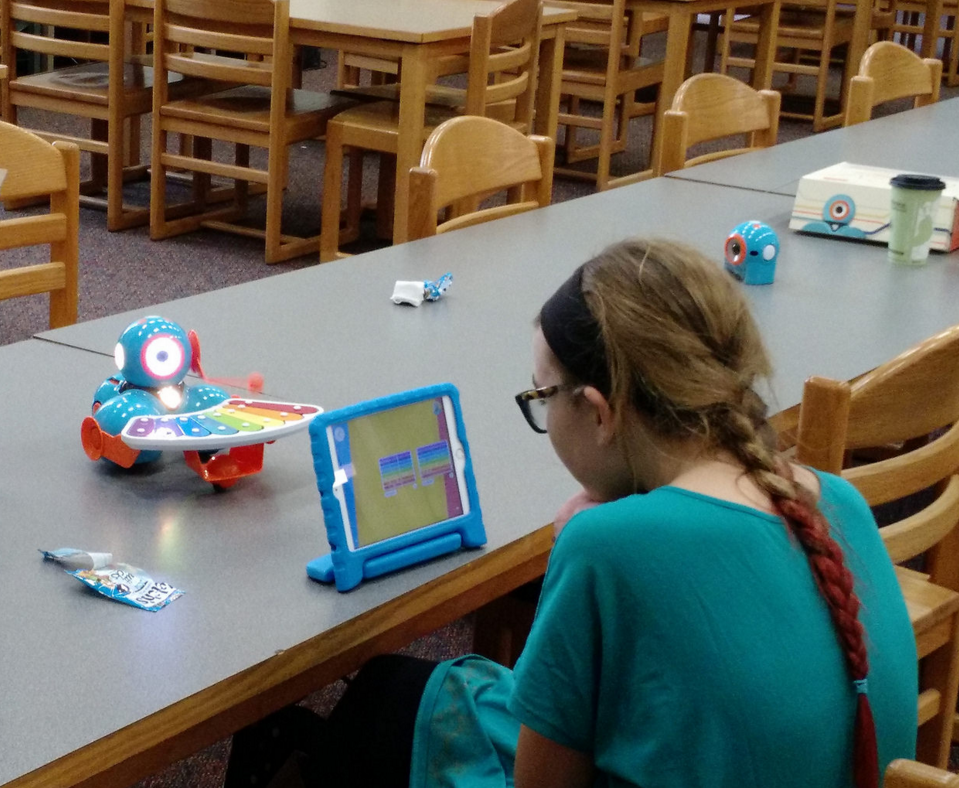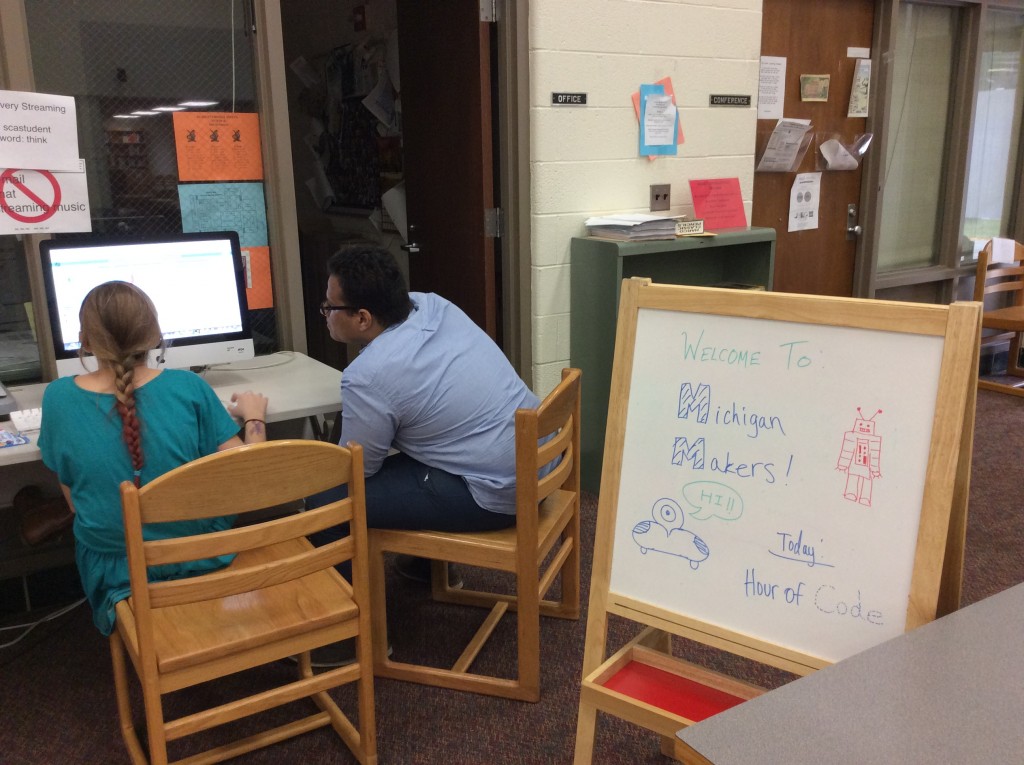We’ve been a bit tech- heavy these past few weeks and wanted to change things up. One of our activities was inspired by “mystery architecture” activities, where students are given a mystery bag of materials and must use the materials to build a structure to meet a challenge.
We challenged the students to work in teams and build a tower as tall as they could in 25 minutes. The ONLY materials they could use were the ones in their mystery bags. The structure must stand long enough for us to take a measurement.
Here’s what was in their bags:
- 20 toothpicks
- 20 mini-marshmallows
- 10 pieces of dried spaghetti
- 4 packing peanuts
- 2 drinking straws
- 2 coffee stirrers
The students took the the challenge right away. Some students surveyed the contents of their bag before strategizing how to best use the materials. Some dove right into building, sticking spaghetti into the marshmallows and creating height. It was exciting to watch them take such different approaches!
As structures started coming together (and climbing higher!), we noticed a lot of students taking a step back and figuring out how to address structural weaknesses. One team used a paper bag as the base but wanted to increase its stability since it was flimsy. Their solution? Roll up the opening of the paper bag (like you would to a long-sleeve shirt) to give it some stability. One student focused less on overall height and more on creating a solid, supportive base. We noticed all teams experimenting with triangle and square-shaped supports, figuring out which would be most secure.
Our highest tower stood at more than 3.5 feet tall!
To wrap up the day, we introduced them to LittleBits. These kits come with components that snap together to make light, sound, and motion. Because the components can be arranged in so many ways, we saw a range of creations: a light that only comes on after pressing a pressure sensor and a light switch, to a sound device that produces intergalactic sounds. The kids were asking about whether we could combine kits and make bigger versions of what they were working on. To be continued on at another time in Michigan Makers…?

